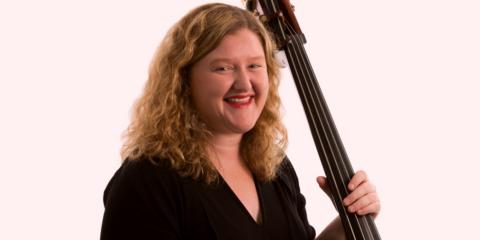Flute & Harp can be heard on Thursday 12 September at Hawthorn Arts Centre and Sunday 15 September at Melbourne Recital Centre.
MCO: This concert features two symphonies in E flat major – by CPE Bach (1757) and Haydn (1771). What important differences are there between these two works?
Emma: Franz Joseph Haydn is one of the most celebrated composers of all time – and justly so. Symphony 43 in E flat Major is yet another brilliant offering from the man dubbed the “Father of the Symphony”. C. P. E. Bach, on the other hand, is nowadays relatively underrated, even though his music is highly original and inventive. He was held in high regard by Haydn, Beethoven, Brahms and Mozart, who said of him, “Bach is the father, we are the children”.
C. P. E. Bach is often seen as the link between the end of the Baroque era and the beginning of the Classical period and his music displays characteristics of both. The Symphony featured in our program follows the typically Baroque format of three movements (fast-slow-fast), the final movement is in a dance style and the violin writing is often in unison (meaning that the first and second violins play the same material). Bach’s melodic content, however, is much more in keeping with Classical style, with long, expressive, singing lines – this is most evident in the striking slow movement. Haydn’s symphony is entirely in a Classical idiom, with four contrasting movements and a completely independent part for the second violins.
Despite their differences, the two symphonies can both be seen as representative of a movement in German literature and music termed Sturm und Drang (translating to Storm and Stress). Most prevalent in the 1760s – 1780s, works under this umbrella exhibited extremes of emotion and sudden shifts in affect. The final Allegro movement of Haydn’s symphony and the opening Prestissimo movement of C. P. E. Bach’s symphony are explosive and exciting examples of this style.
MCO: How is a concerto for two solo instruments different from a concerto with just one?
Emma: The main point of difference is that there is more variety in texture, as throughout the work the solo instruments are featured as separate soloists, as well as in a duet capacity. Mozart’s beloved Concerto for flute and harp is a particularly effective example of the double concerto because the instruments fulfil such different musical roles, with the flute providing a single lyrical line and the harp capable of creating both solo lines and harmonic support. Moreover, both instruments offer a different sound world to the tutti strings, allowing them to emerge from the orchestral texture very successfully.
This concerto also differs a little to a standard solo concerto in its structure. Mozart has written the work in the form of a Sinfonia Concertante, a continuation of the Baroque Concerto Grosso format, where a group of soloists are contrasted with the full orchestra. Mozart composed his Flute and Harp Concerto for a French duke and his daughter, who was taking composition lessons from Mozart in Paris at the time. It is his only work for harp and his writing is quite pianistic, with no sign of the glissandi and lush chordal writing seen in later works for the instrument. I think this is one of the reasons the work is so engaging, as audiences get to hear the harp in a totally different light.

